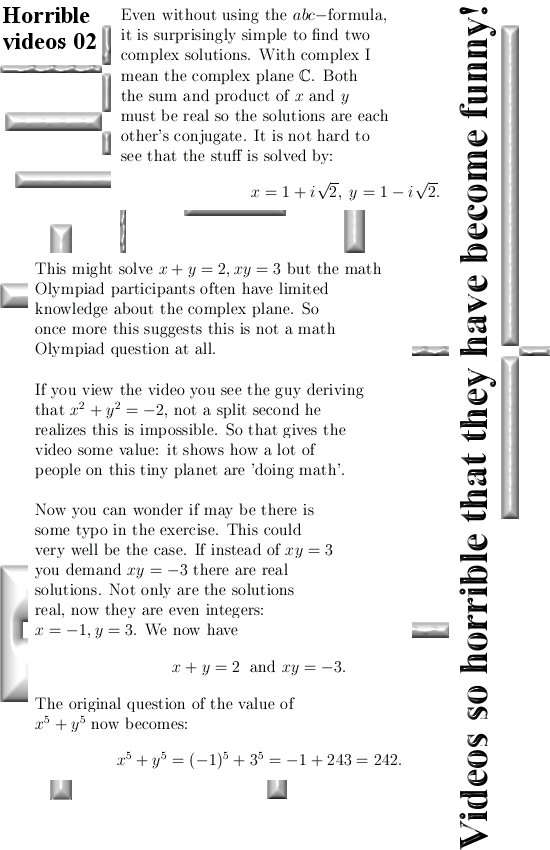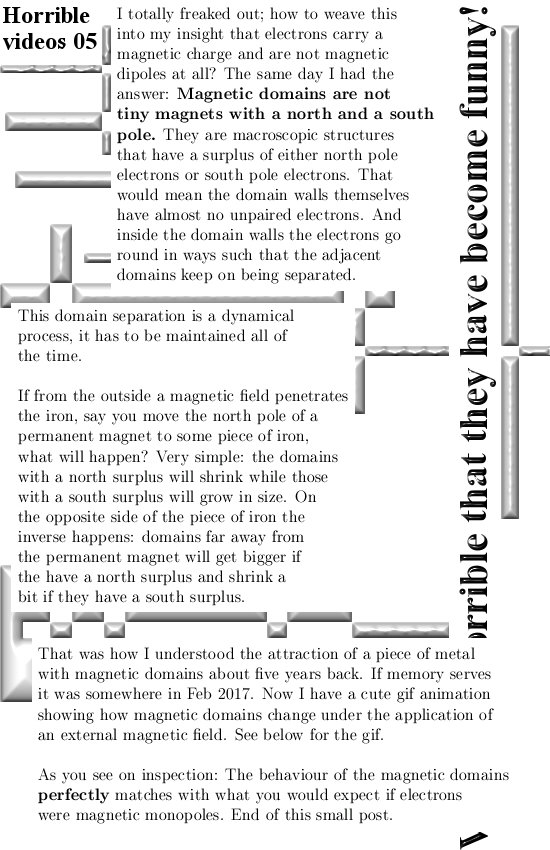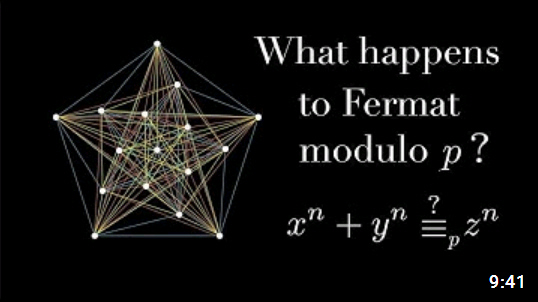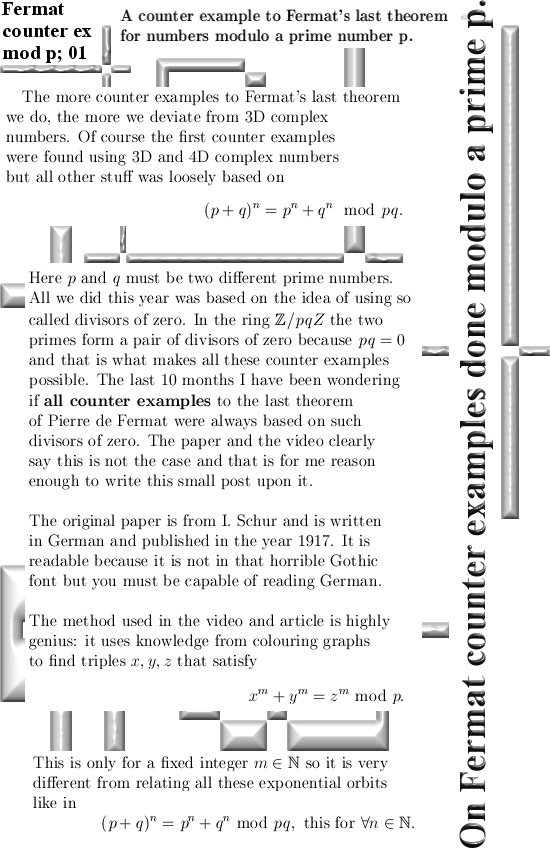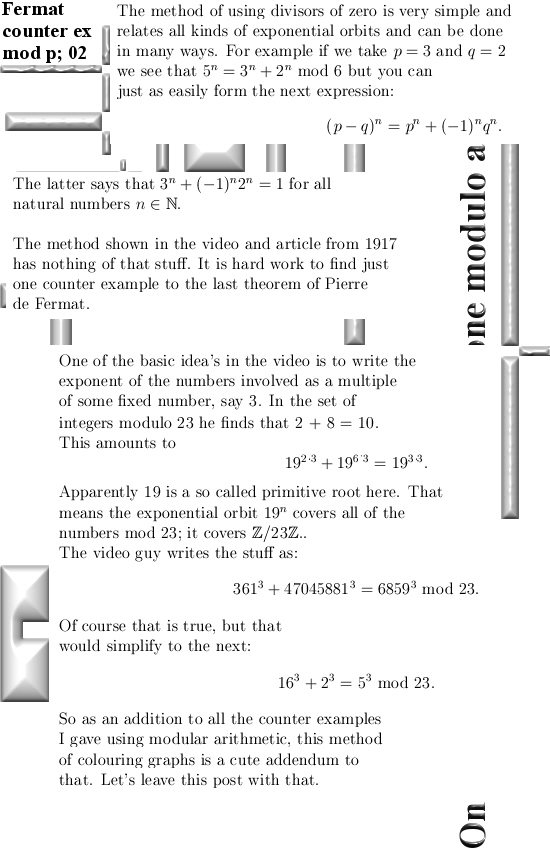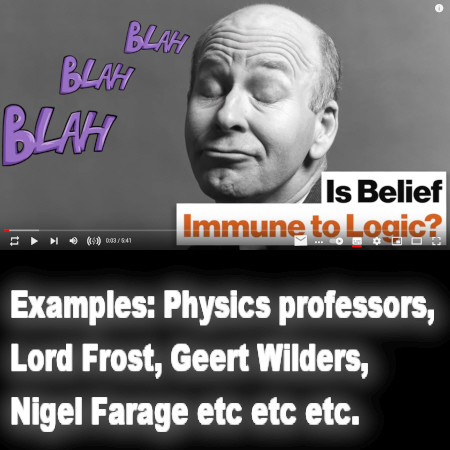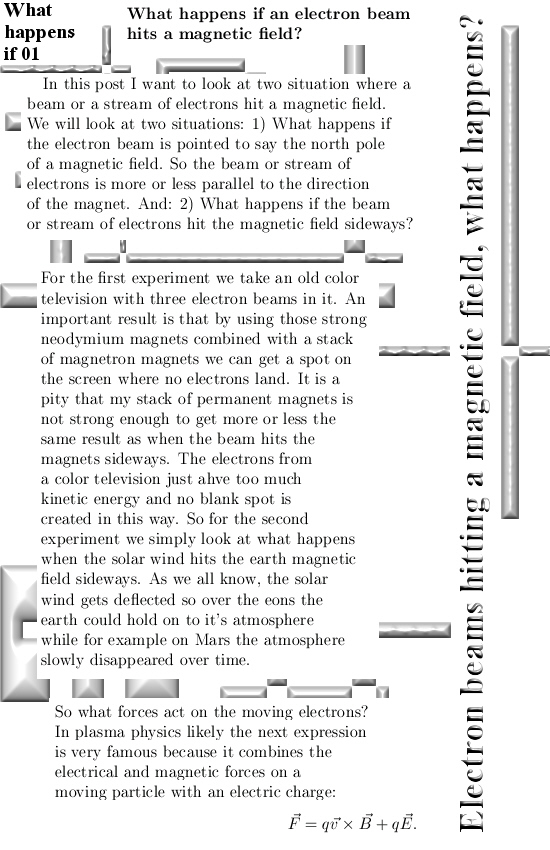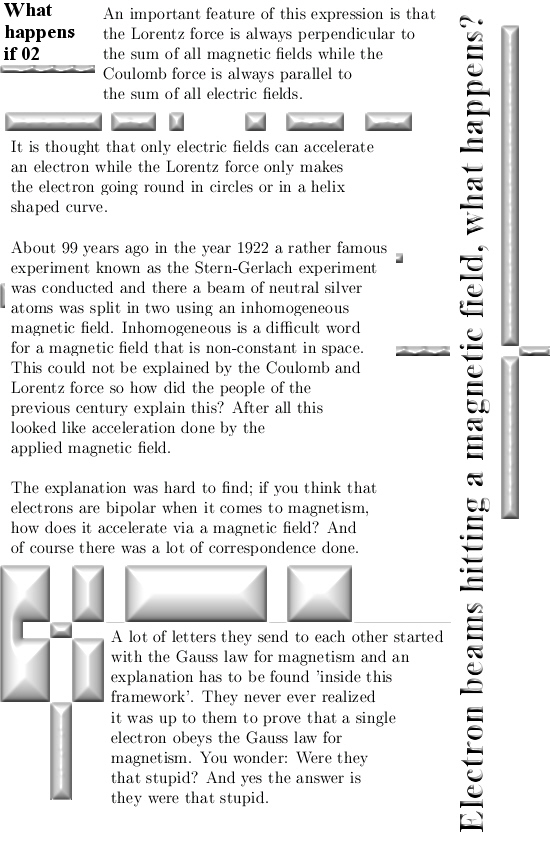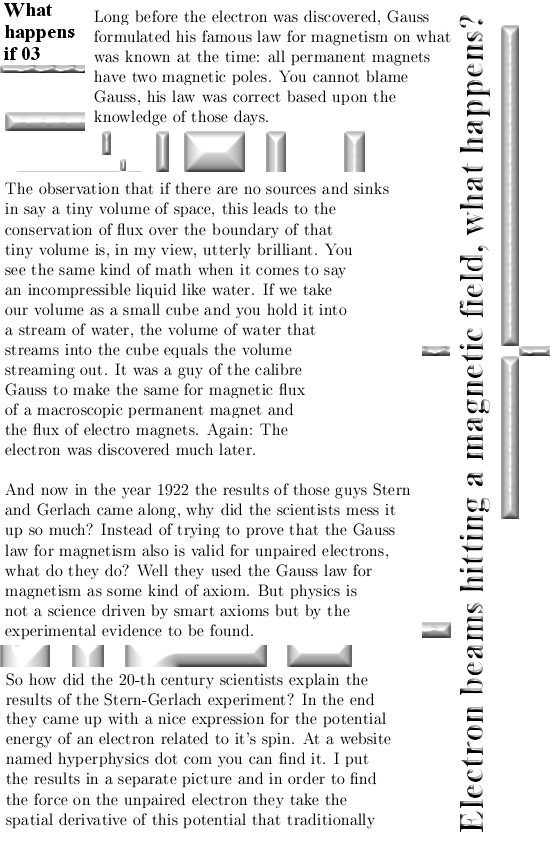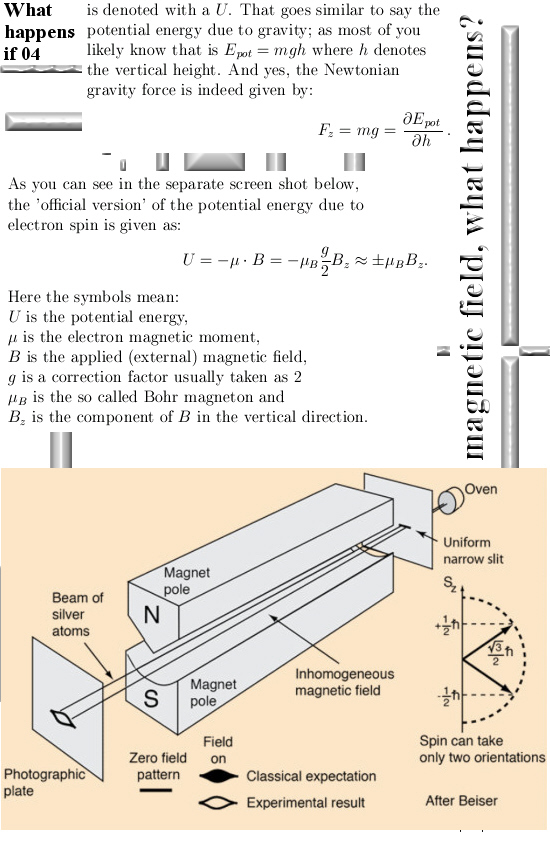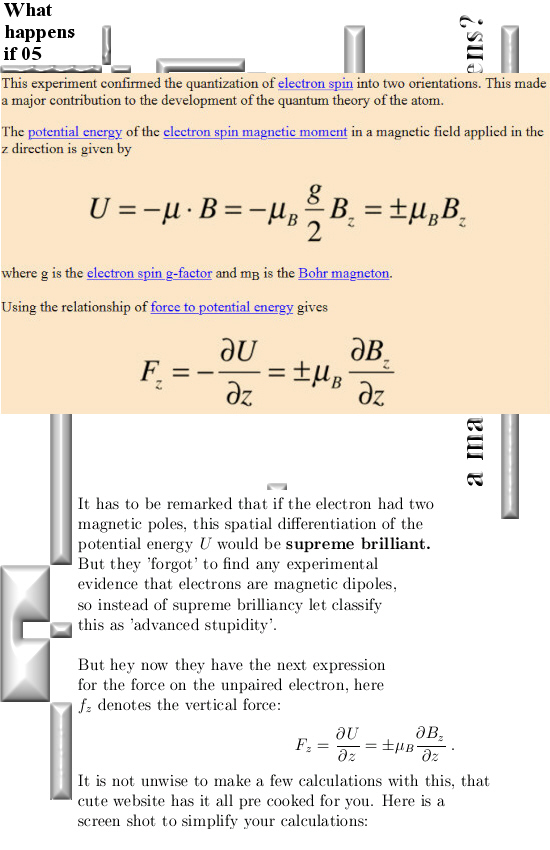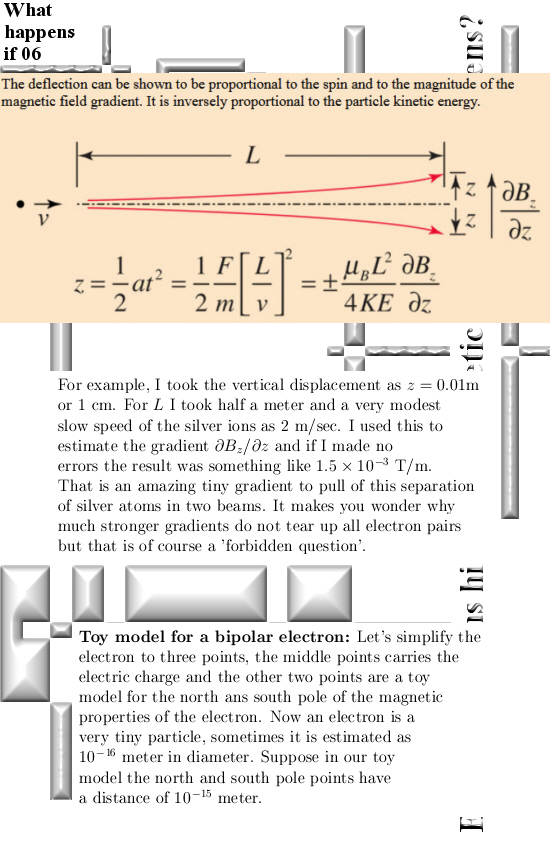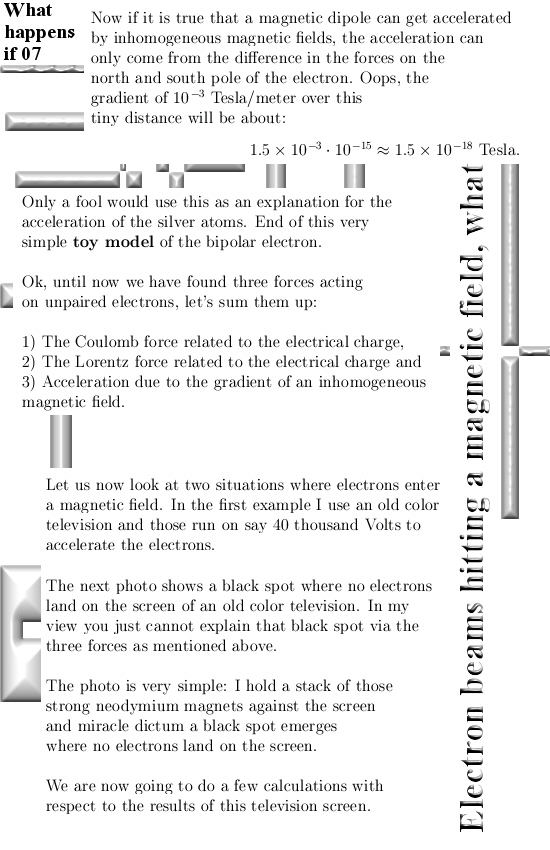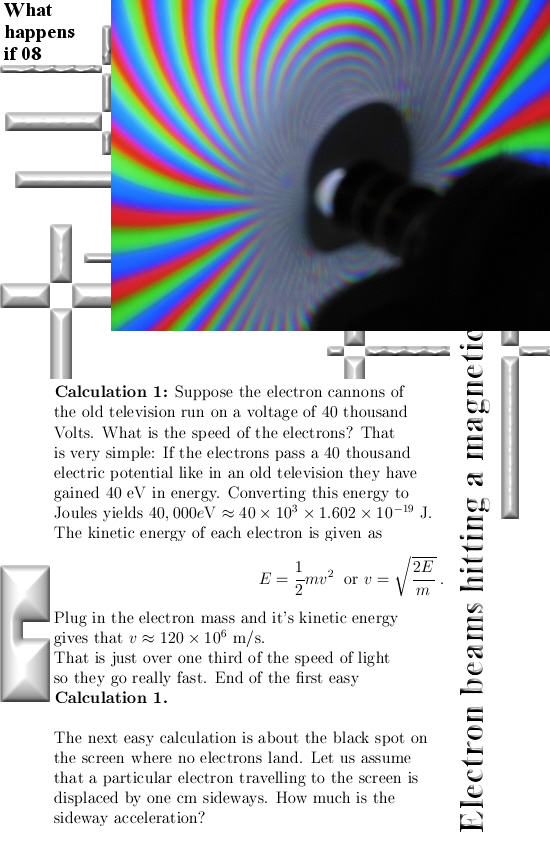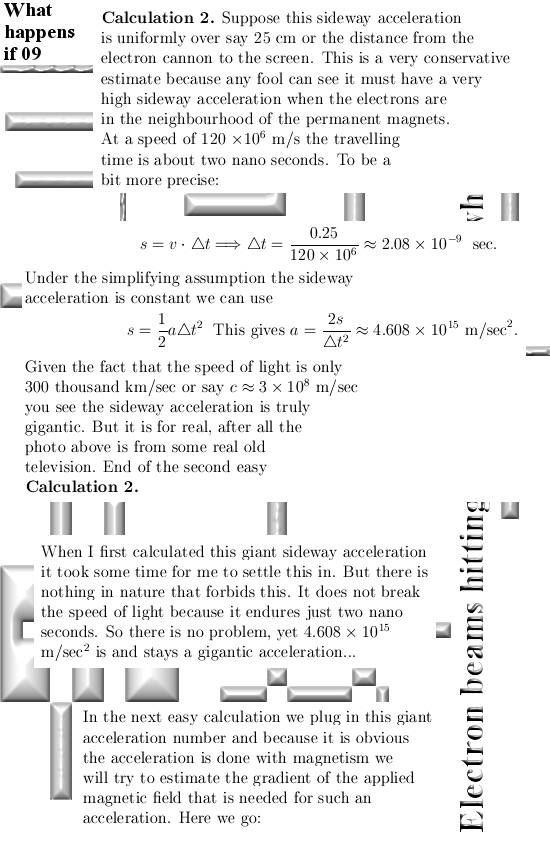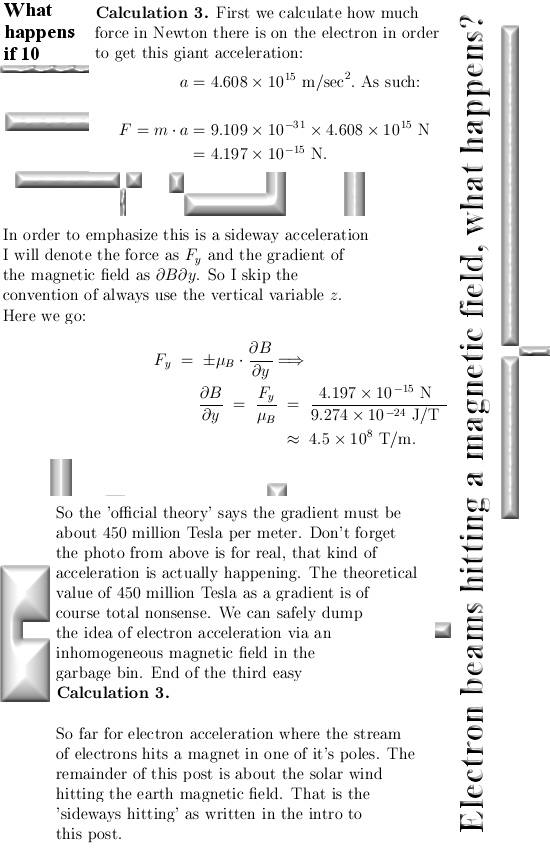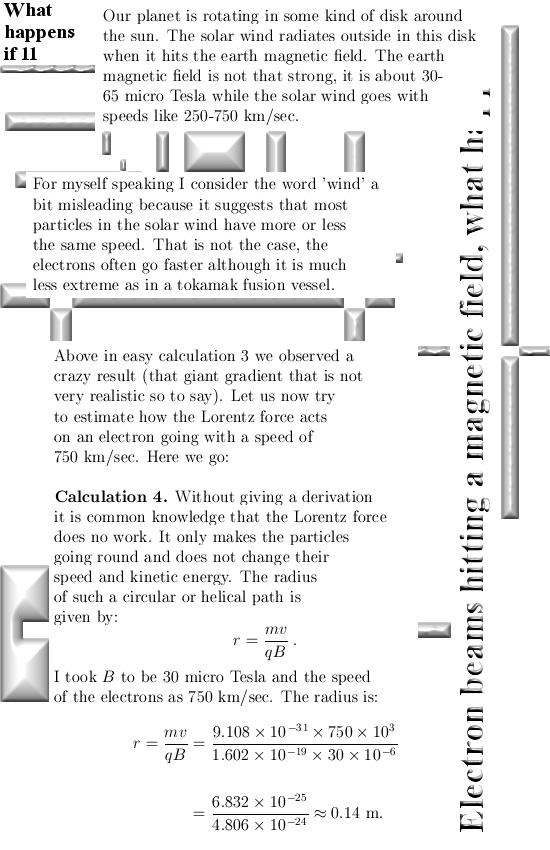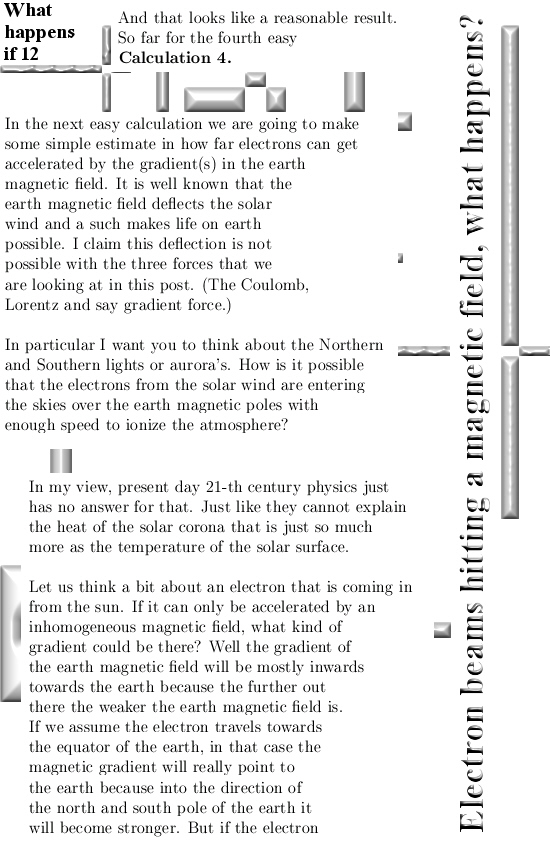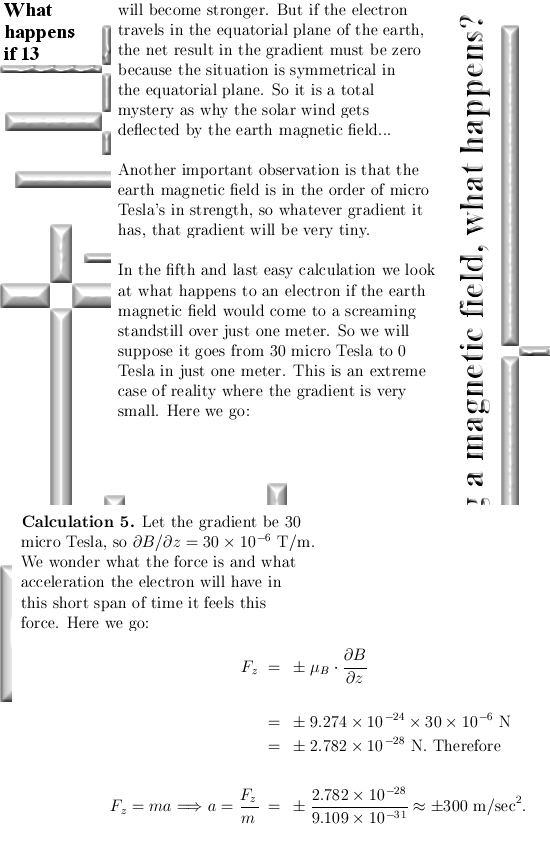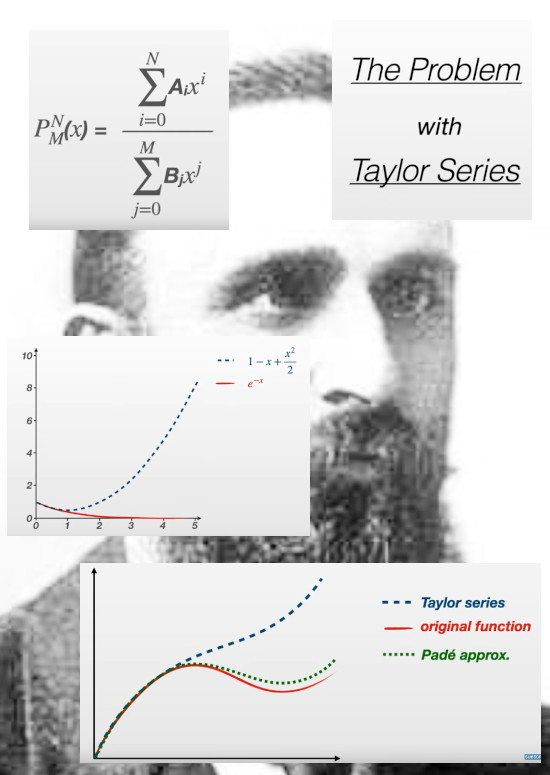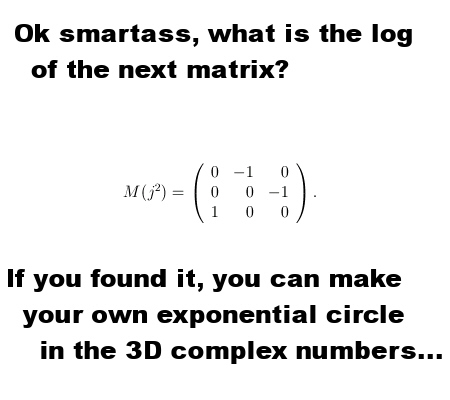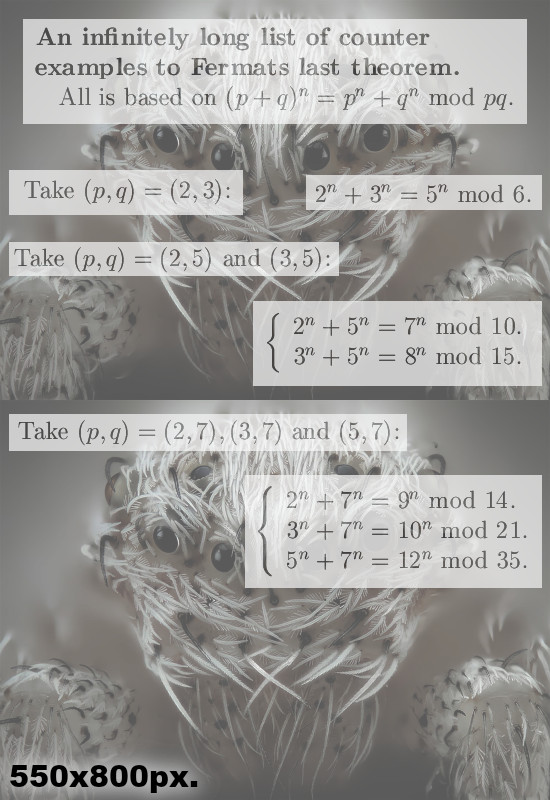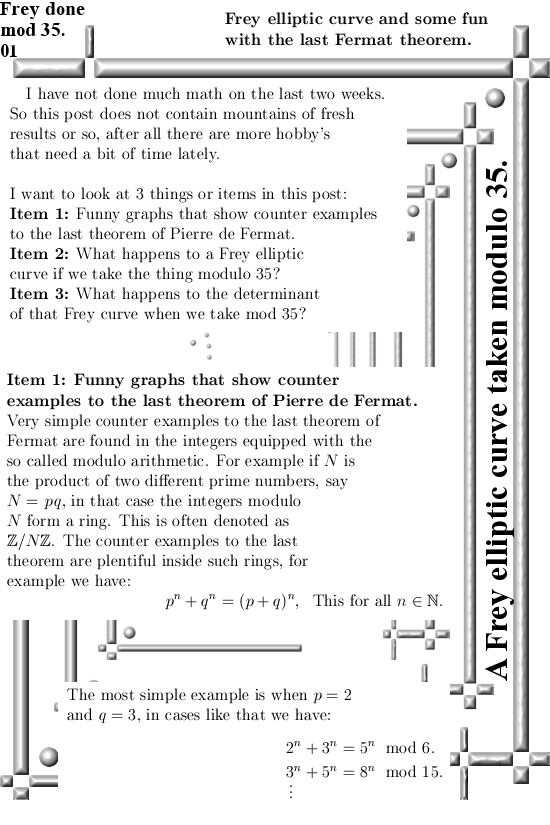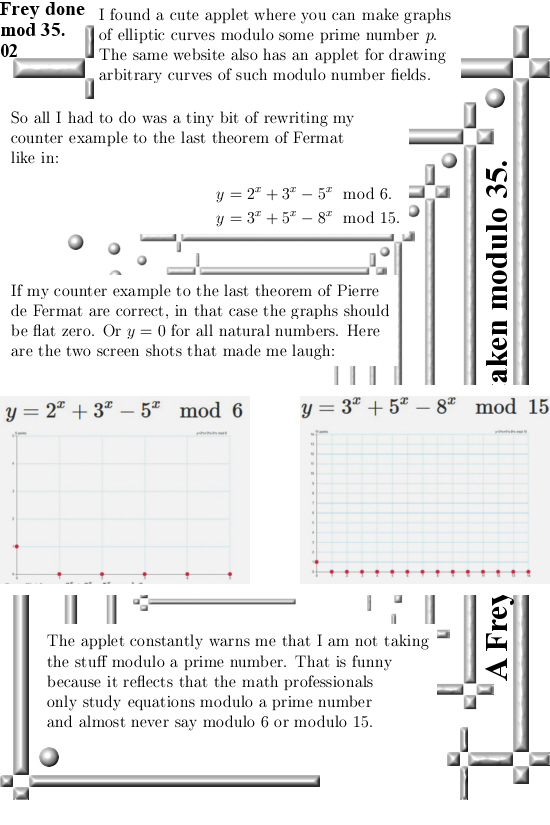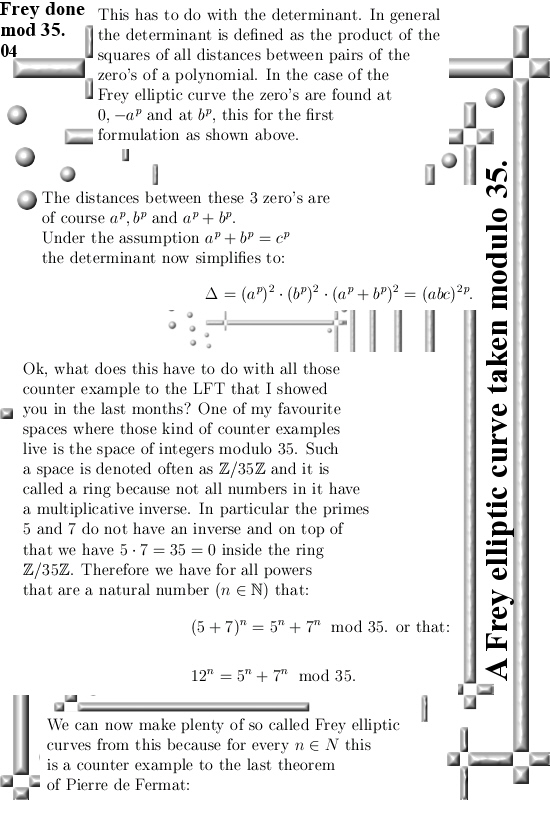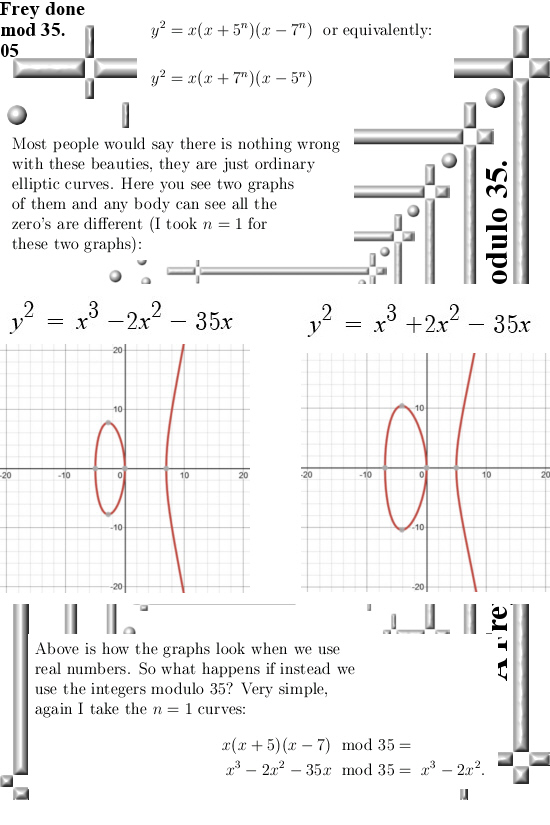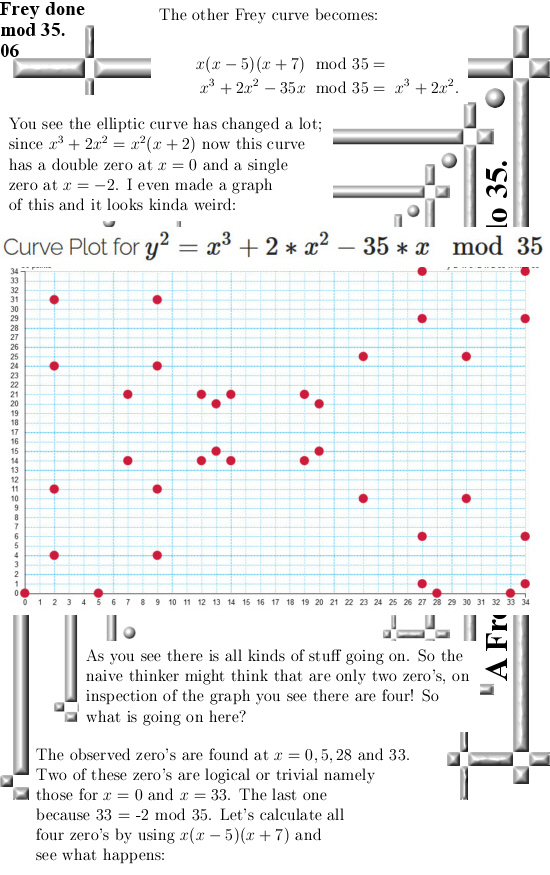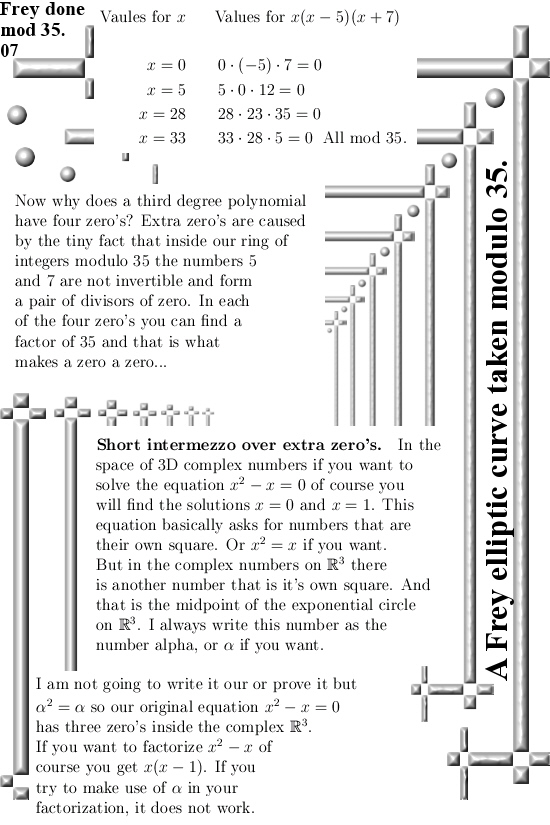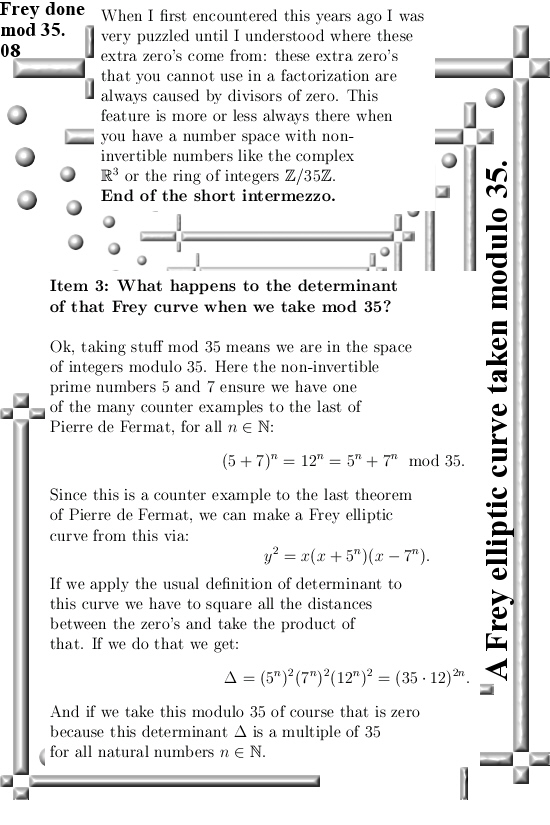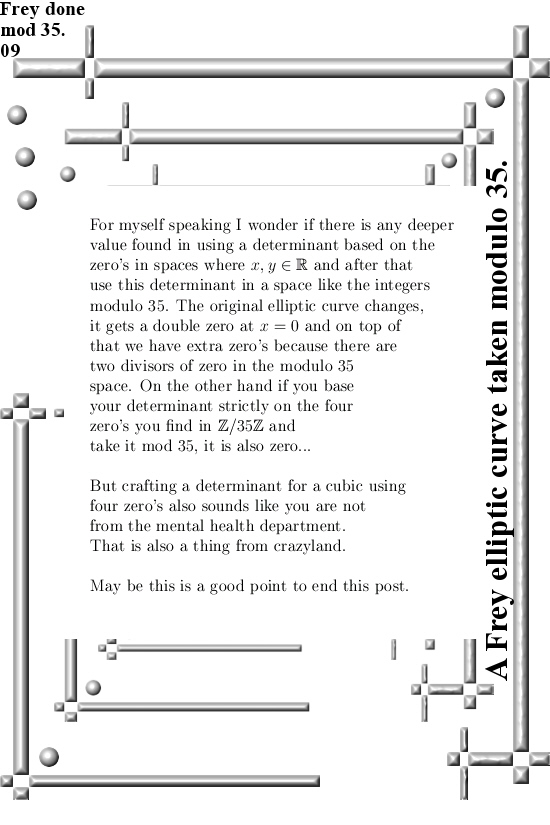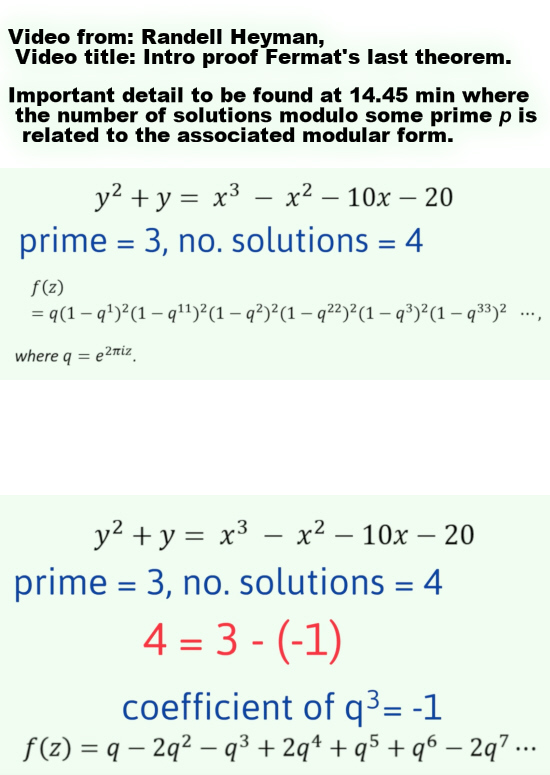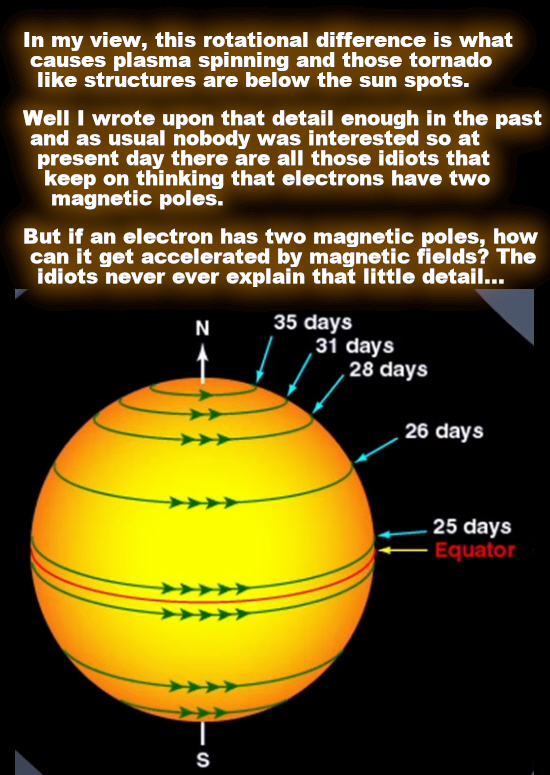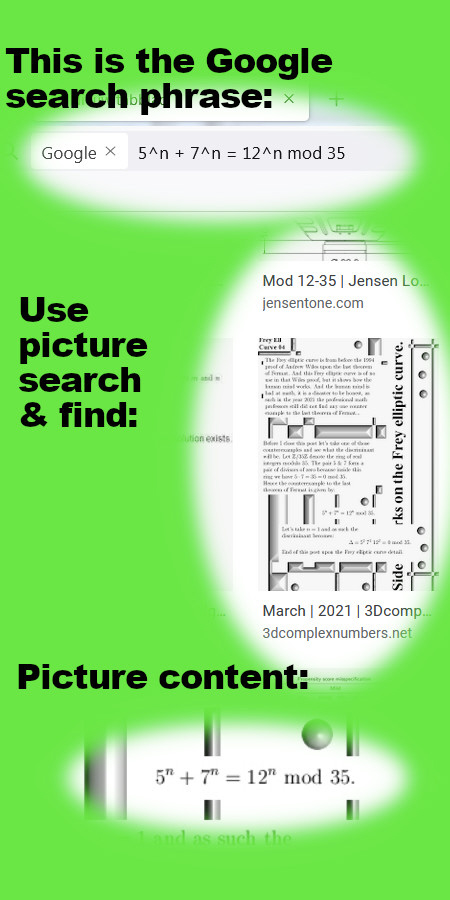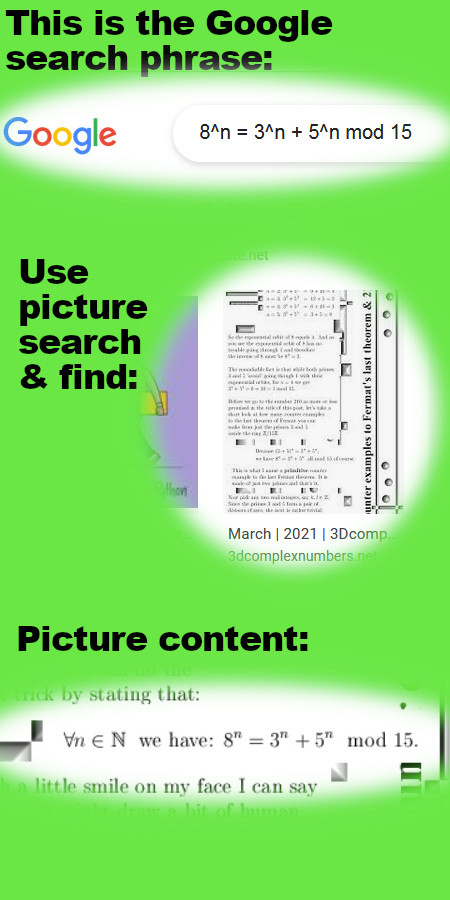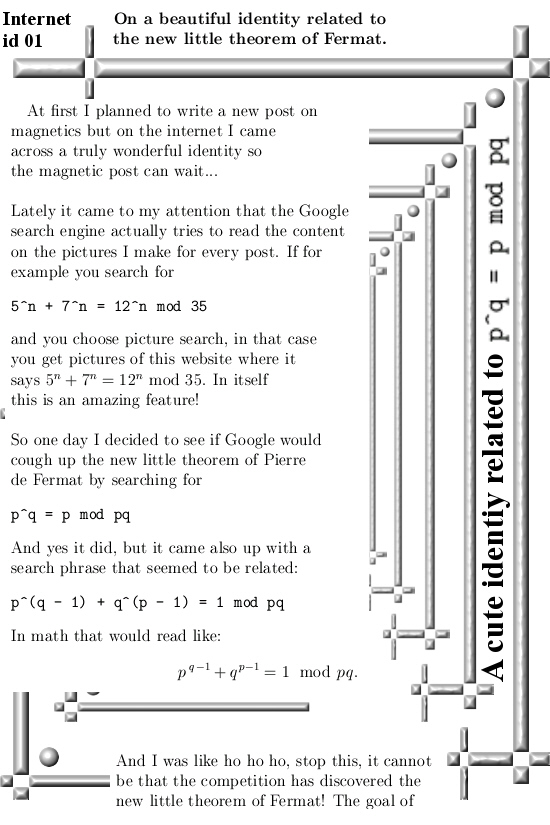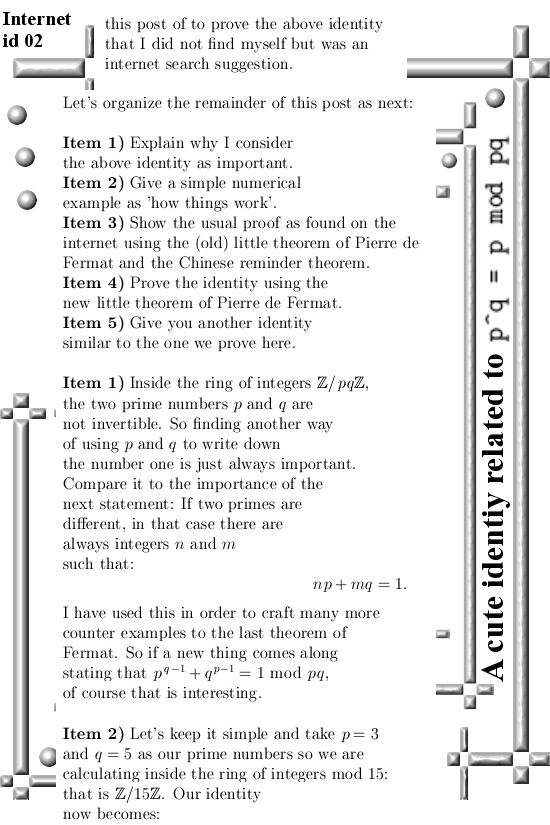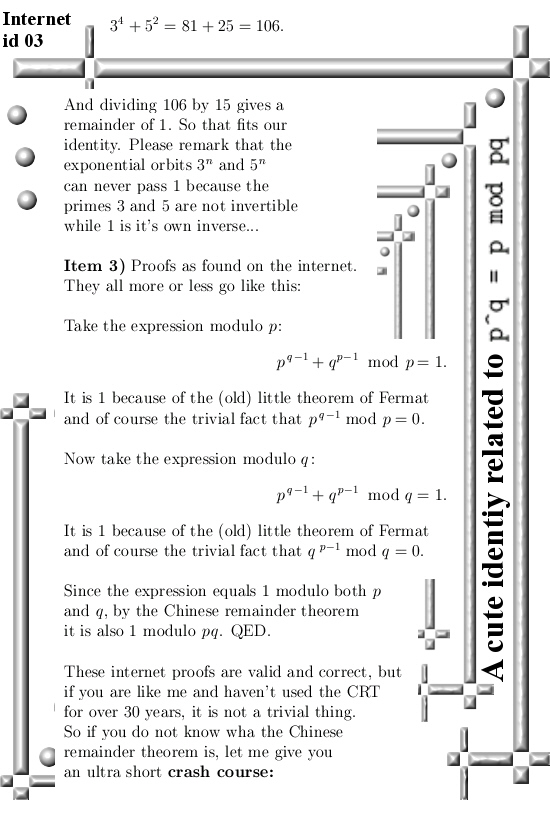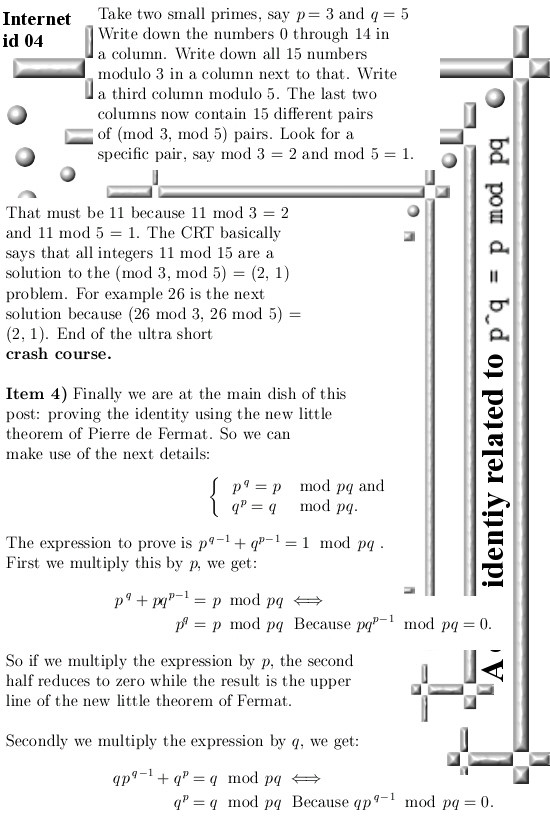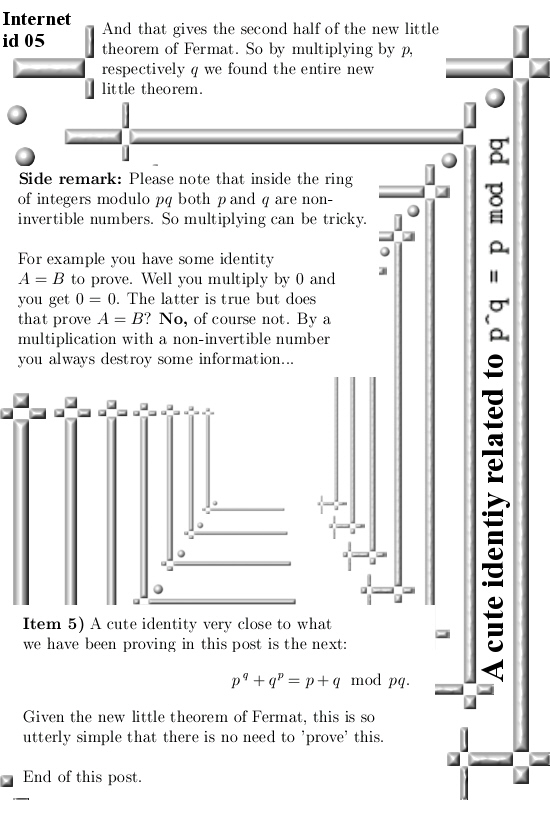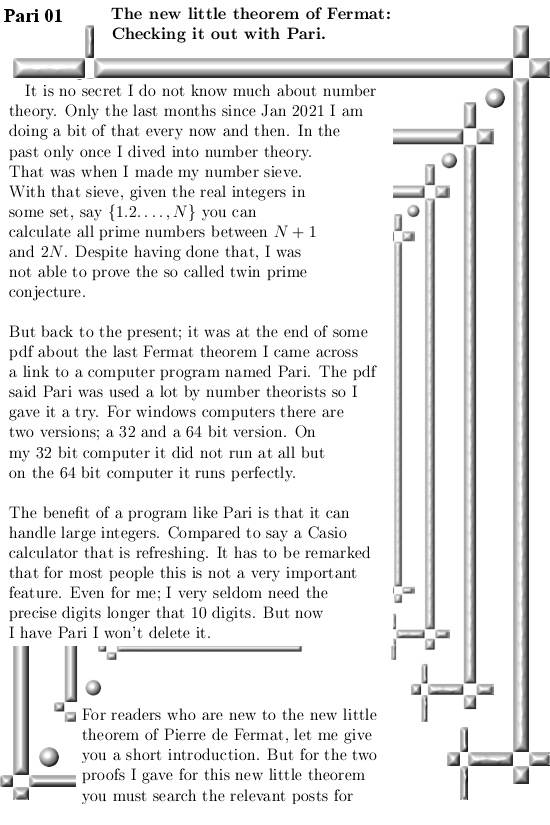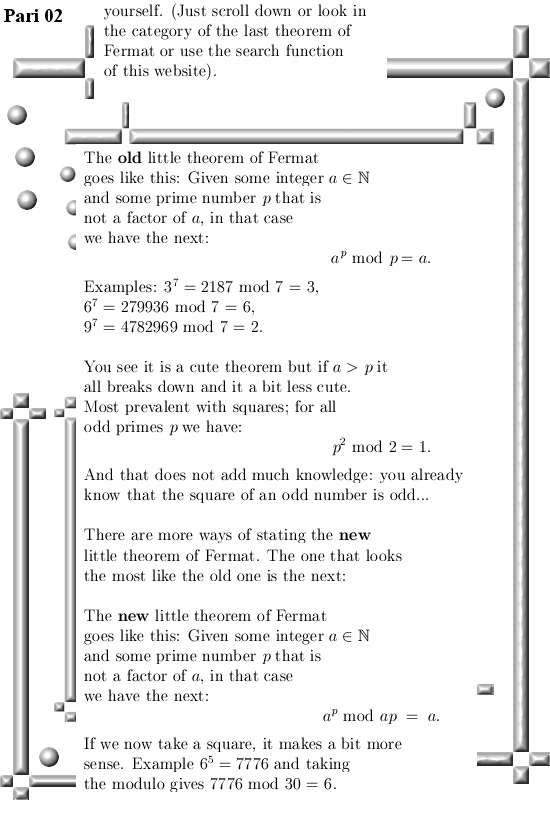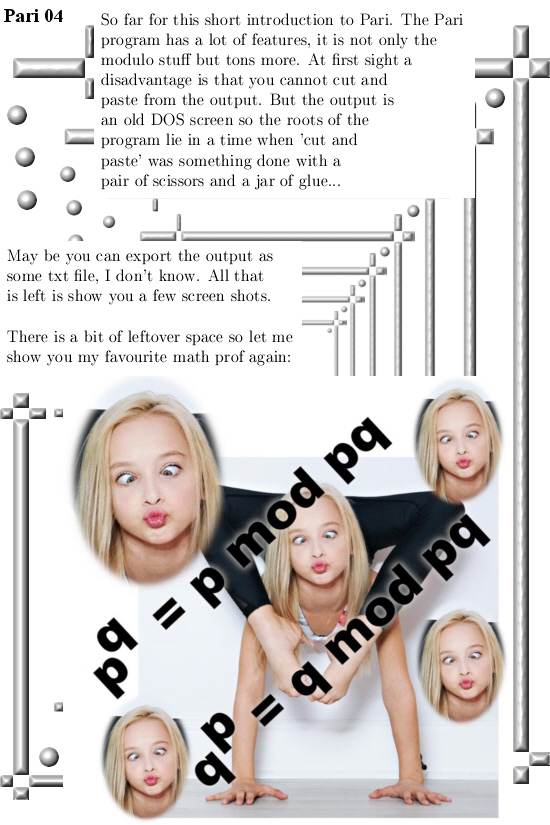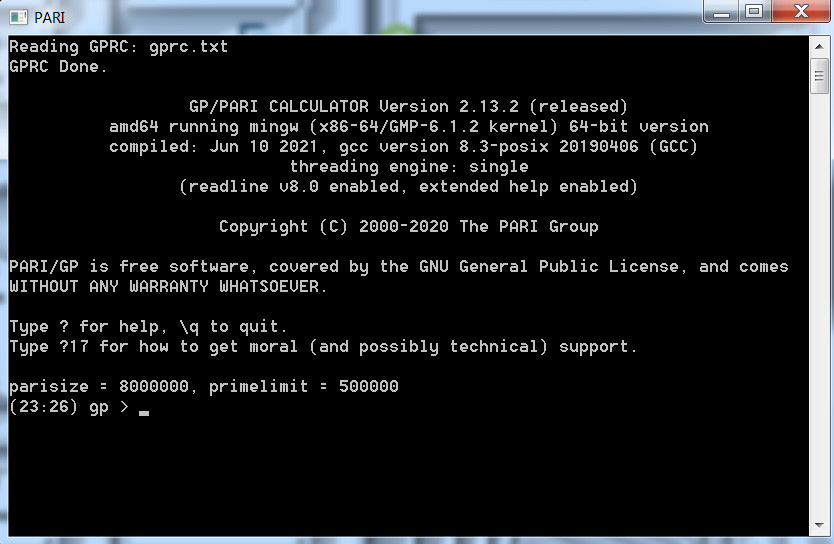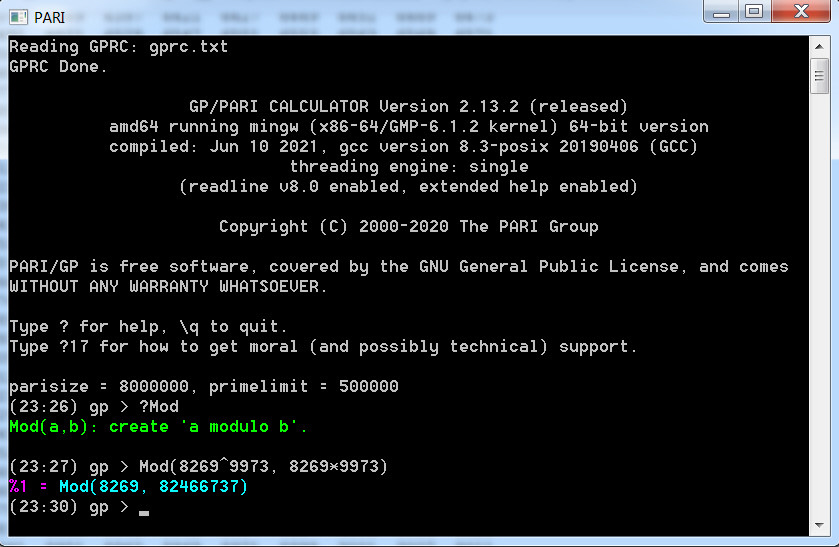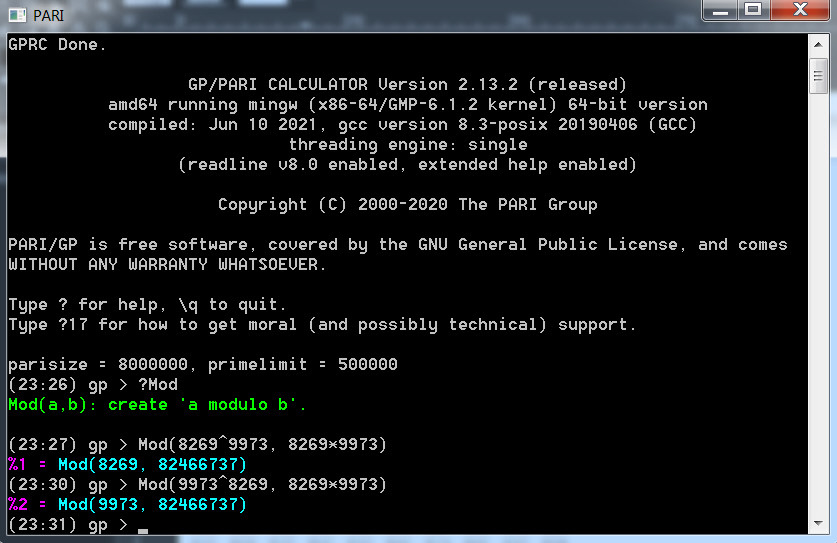Despite my slowly detoriating health the last year was a remarkable fruitfull year when it comes to new stuff. So I selected five highlights and of course that is always a difficult thing. Two of the highlights are about magnetism and the other three are just math. Once more: The fact that I include two magnetic highlights does not mean I am trying to reach out to the physics community in any meaningful way. If these idiots and imbeciles keep on thinking that electrons have two magnetic poles, be my guest. There is plenty of space under the sun for completely conflicting insights: Idiots and imbciles thinking that electrons have two magnetic poles and more moderate down to earth people that simply remark: for such a bold claim you need some kind of experimental evidence that is convincing.
But 2021 was a very good year when it came to math; I found plenty of counter examples to the so called last theorem of Pierre de Fermat. I was able to make a small improvement on the so called little theorem of Fermat. A very important detail is that I was able to make those counter examples to the last theorem so simple that a lot of non math people can also understand it. That is important because if you craft your writings to stuff only math professors can understand, you will find yourself back in a world of silence. Whatever you do there is never any kind of response. These math professors were not capable of finding three or four dimensional complex numbers, they stay silent year in year out so I have nothing to do with them. In the year 2021 I classified the physics professors to be the same: Avoid these shitholes at all costs!
After having said that, this post has eight pictures of math text and it has the strange feature that I am constantly placing links of posts I wrote in the last year. So lets go:
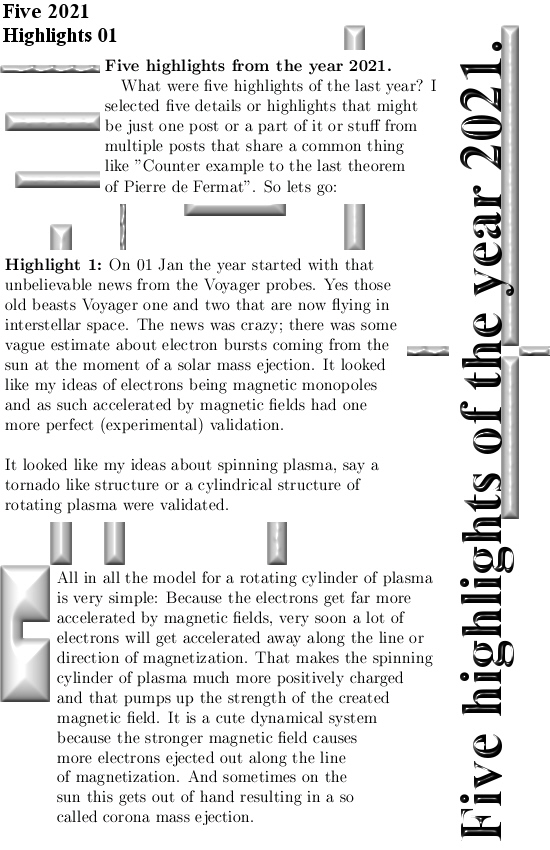
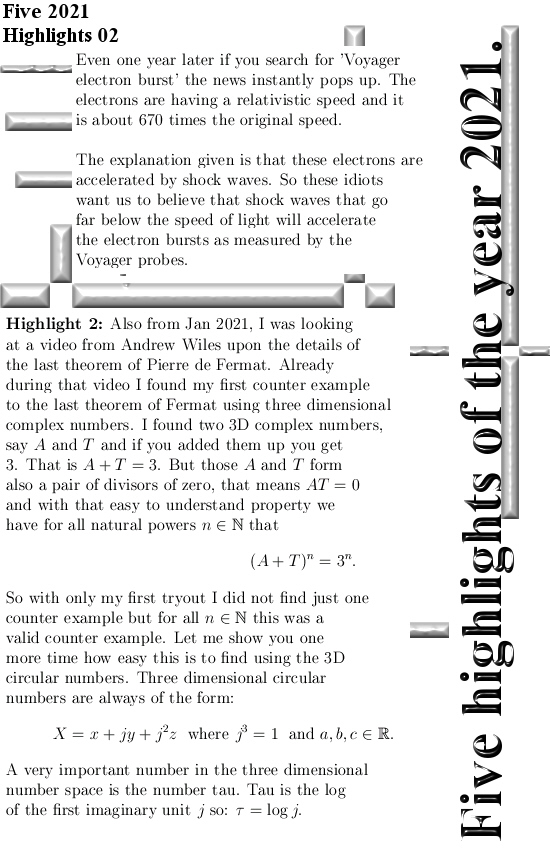
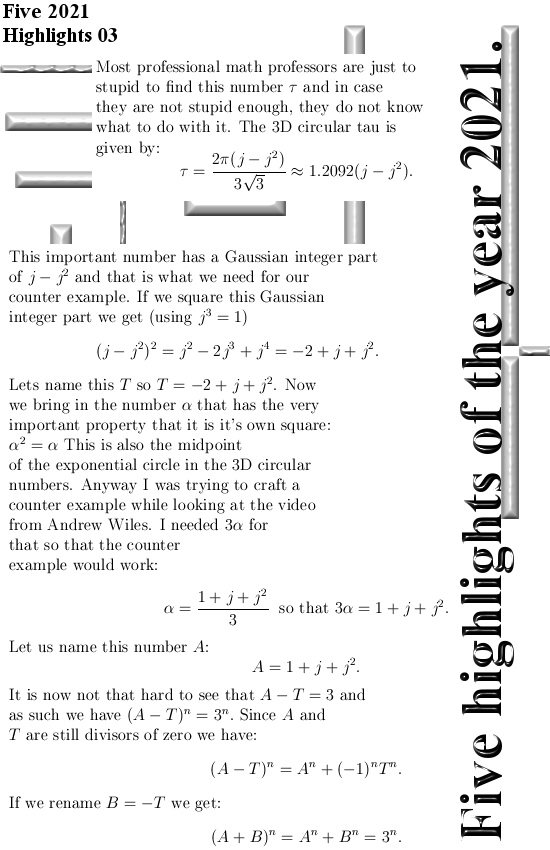
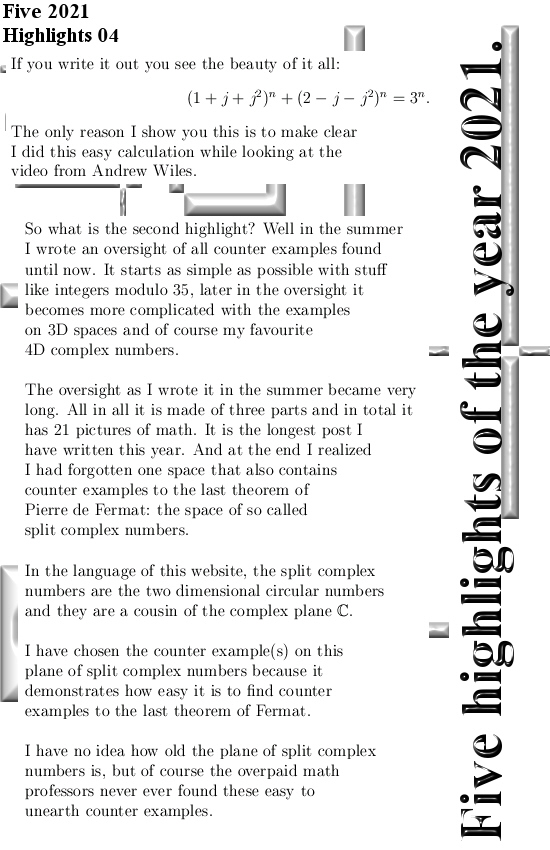
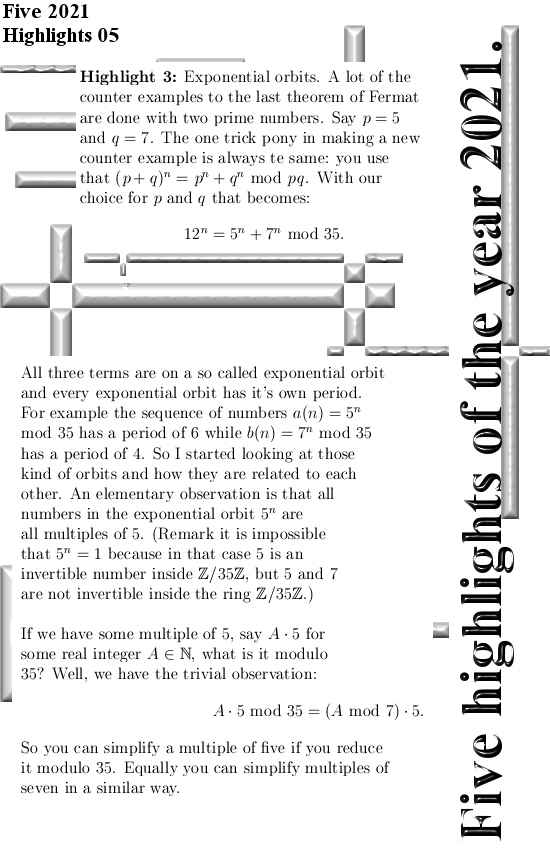
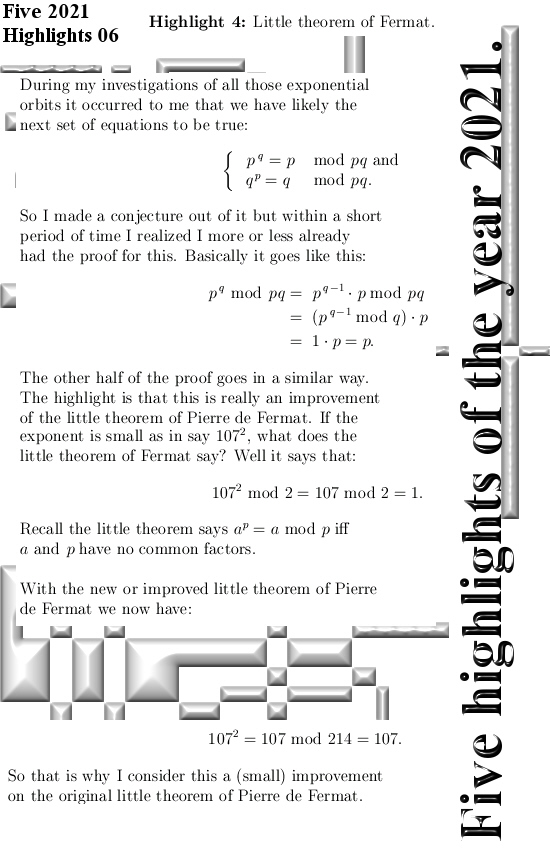

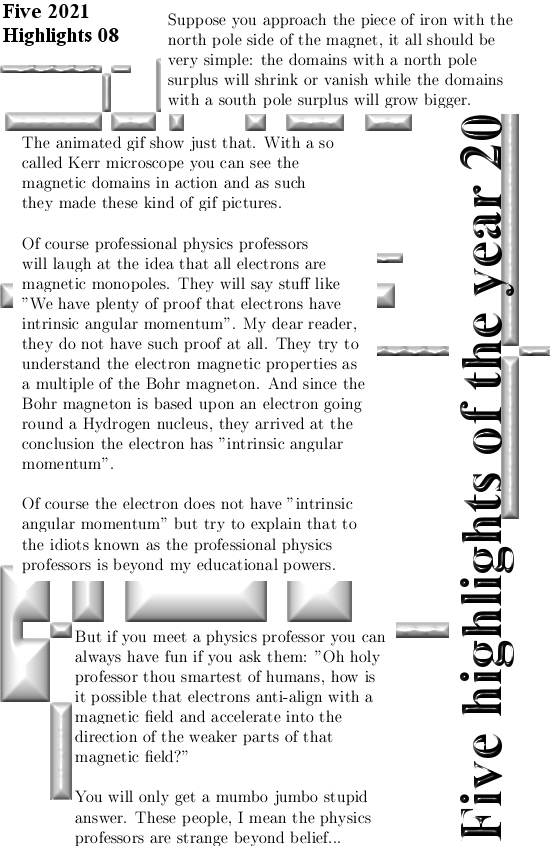

I think that if you show the above animated gif to a physics professor and ask for an explanation, likely this person will say: “Oh you see the electrons aligning with the applied external magnetic field, this all is well understood and there is nothing new under the sun here”.
Of course that kind of ‘explanation’ is another bag of bs, after all the same people explain the results of the Stern-Gerlach experiment via the detail that every electron has a 50% probability that it will align with the applied external magnetic field (and of course 50% that it will anti-align). In my view that is not what we see here. As always in the last five+ years an explanation that electrons are magnetic monopoles with only one of the two possible magnetic charges is far more logical.
This year in the summer I wrote an oversight of all counter examples to the last theorem of Pierre de Fermat I had found until then. It became so long that in the end I had three posts on that oversight alone. I wrote it in such a way that is starts as easy as possible and going on it gets more and more complicated with the counter example from the space of four dimensional complex numbers as the last example. So I finished it and then I realized that I had forgotten the space of so called split complex numbers. In the language of this website the split complex numbers are two dimensional circular numbers. It is just like the complex plane with two dimensional numbers of the form z = x + iy, only now the square of the imaginary unit is +1 instead of i^2 = -1 as on the complex plane. So I made an appendix of that detail, I consider this detail important because it more or less demonstrates what I am doing in the 3D and 4D complex number spaces. So let me put in one more picture that is the appendix of the long post regarding the oversight of all counter examples found.
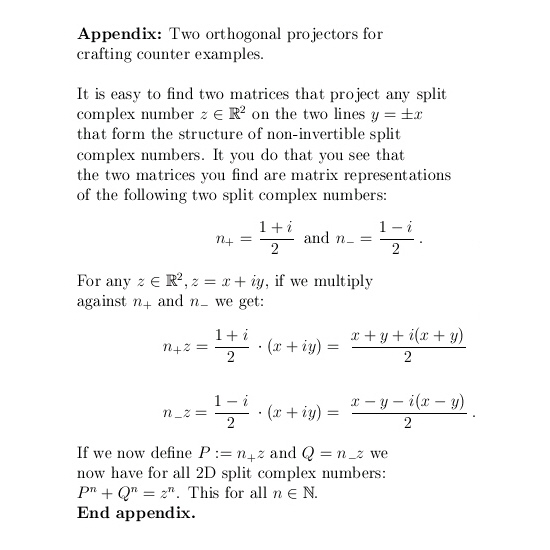
All that is left is place a link to that very long oversight:
Ok, so far for what I consider the most significant highlights of the previous year. And oops, since I am a very chaotic person before I forget it: Have a happy 2022! It is time to say goodbye so think well and work well my dear reader.

